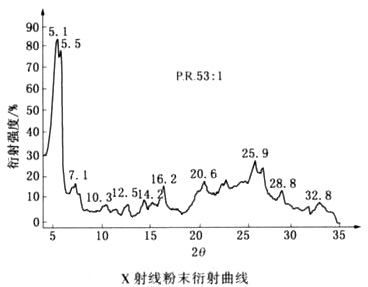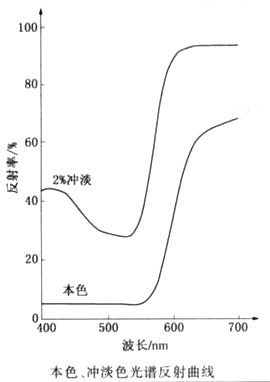3180
Lakered CBA
CAS: 5160-02-1
Molecular Formula: C34H24BaCl2N4O8S2
3180 - Names and Identifiers
| Name | Lakered CBA |
| Synonyms | N 3180 1306 3110 DANDCRED9 RED TONER C Lakered CBA Lake red CBA Red Lake CS Lake Red OF-08 C.I. Pigment Red 53 C.I. Pigment Red 53, barium salt Hilton Davis Microspin Red Lake C Dominion DCC-2507, 2509, 2512, 2518, 2519, 2520 BARIUMBIS(2-CHLORO-5-(HYDROXY-1-NAPHTHYL)AZO)TOLUENE-4-SULPHONATE |
| CAS | 5160-02-1 |
| EINECS | 225-935-3 |
| InChI | InChI=1/2C17H13ClN2O4S.Ba/c2*1-10-8-14(16(9-13(10)18)25(22,23)24)19-20-17-12-5-3-2-4-11(12)6-7-15(17)21;/h2*2-9,21H,1H3,(H,22,23,24);/q;;+2/p-2/b2*20-19+ |
| InChIKey | POJOORKDYOPQLS-FFRZOONGSA-L |
3180 - Physico-chemical Properties
| Molecular Formula | C34H24BaCl2N4O8S2 |
| Molar Mass | 888.94 |
| Density | 1.66 g/cm3 |
| Melting Point | 343-345°C |
| Water Solubility | <0.01 g/100 mL at 18 ºC |
| Appearance | powder to crystal |
| Color | Orange to Red |
| Storage Condition | Room Temprature |
| MDL | MFCD01941571 |
| Physical and Chemical Properties | solubility: dark brown in potassium hydroxide alcohol solution; Red precipitation in aqueous solution and hydrochloric acid; Pink cherry in concentrated sulfuric acid, Brown red precipitate after dilution; Slightly soluble in hot sodium hydroxide (yellow), slightly soluble in ethanol, water, insoluble in benzene and acetone. hue or shade: brilliant yellow relative density: 1.65-2.11 Bulk density/(lb/gal):13.7-17.5 melting point/℃:380-390 average particle size/μm:0.07-0.5 particle shape: needle, rod-like specific surface area/(m2/g):7-110 Ph/(10% slurry):6.5-8.0 oil absorption/(g/100g):40-78 hiding power: translucent diffraction curve:  reflection curve:  This product is yellow red powder, bright color, with the characteristics of strong color golden light, and Gold light and more durable and strong, made of ink flow is good. Good heat resistance. Insoluble in acetone, slightly soluble in ethanol water, in concentrated sulfuric acid and concentrated sodium hydroxide have color change. |
| Use | The pigment is more yellow than pigment Red 57:1, which is called Warm Red, has high tinting power and brightness, and is sensitive to acid/alkali. Applied to ink, good solvent resistance and heat stability (200 C/10min); For water-based flexographic ink, molecular metal and base ink alkali agent to reduce the stability; For rubber and plastic, heat resistance in HDPE 260/5min, can be used for food, cosmetics and pharmaceutical coloring. There are more than 130 brands on the market. It is mainly used for coloring of ink, rubber products and bicycle inner tube. Also used for cultural and educational and plastic products coloring. The structure of rubber red LC is the same as that of gold Red C, but its synthesis process is to directly prepare Barium Salt Lake after coupling. The product is bright yellow and red, and the texture is soft. |
3180 - Risk and Safety
| Risk Codes | 20/21/22 - Harmful by inhalation, in contact with skin and if swallowed. |
| Safety Description | S22 - Do not breathe dust. S36/37/39 - Wear suitable protective clothing, gloves and eye/face protection. |
| UN IDs | 1564 |
| RTECS | DB5500000 |
| Hazard Class | 6.1 |
| Packing Group | III |
3180 - Reference Information
| color index | 15585 |
| (IARC) carcinogen classification | 3 (Vol. Sup 7, 57) 1993 |
| EPA chemical information | Information provided by: ofmpub.epa.gov (external link) |
| use | is mainly used for coloring ink, rubber products and bicycle inner tubes. It is also used for coloring cultural, educational and plastic products. The structure of rubber red LC is the same as that of golden red C, but its synthesis process is to directly prepare barium salt lake after coupling. The product is bright yellow light red, soft texture, strong coloring power, good heat resistance, no discoloration and no migration. It is mainly used for coloring rubber, cables and plastic products. used for electrostatic copier mainly used for coloring paint, ink and plastic products used for coloring ink, rubber, plastic, stationery, etc. mainly used for coloring rubber, plastic and stationery |
| production method | reaction equation reaction process: drain 2000L of water in a diazo barrel, add 3kg of pull-open powder, then add 50kg of 20% ammonia water, pour 119kg of CLT acid, slowly add 157kg of 30% hydrochloric acid under stirring to precipitate CLT acid in fine state, add and stir for 20min, the temperature is 10~12 ℃, and the body symbol is 500L, add 36.7kg of sodium nitrite at a temperature of 14~15 ℃, the solution remains acidic, and the end point is controlled to prepare coupling. Drain 1000L of water and 108kg of liquid alkali in the coupling barrel, raise the temperature to 60 ℃, stir and add 79.3kg of acetylnaphthol to dissolve, adjust the volume to 3500L, and adjust the temperature to about 30 ℃ for later use. Under good stirring, the CLT acid diazo liquid was quickly put into the coupling barrel, the end pH value was 10~11, the temperature was 28 ℃, the reaction was continued for 1h, and the pH value gradually decreased to 7.5~8. Add 13kg of rosin dissolved transparent solution with a pH value of 8.5~9. Dissolve 116kg of barium oxide in a certain volume and add it into a coupling barrel with a total volume of 8000 ~ 8500L and an end pH value of 8~8.5. Continue the reaction for 1h, quickly raise the temperature to 100 ℃, and keep the temperature for 1h. Filter, filter cake 80 ℃ for drying. The amount obtained is 255kg. |
| category | toxic substances |
| flammability hazard characteristics | flammability; fire scene decomposes toxic nitrogen oxides, sulfur oxides, chlorides and barium oxide smoke |
| storage and transportation characteristics | warehouse low temperature, ventilation, drying |
| fire extinguishing agent | water, carbon dioxide, dry powder, sand |
| toxic substance data | information provided by: pubchem.ncbi.nlm.nih.gov (external link) |
Last Update:2024-04-09 15:16:50

Supplier List
Product Name: 1-(4-Chloro-o-Sulfo-5-Tolylazo)-2-Naphthol Barium Salt Visit Supplier Webpage Request for quotation
CAS: 5160-02-1
Tel: 18301782025
Email: 3008007409@qq.com
Mobile: 18021002903
QQ: 3008007409
Wechat: 18301782025
CAS: 5160-02-1
Tel: 18301782025
Email: 3008007409@qq.com
Mobile: 18021002903
QQ: 3008007409
Wechat: 18301782025
Product Name: 1-(4-Chloro-o-Sulfo-5-Tolylazo)-2-Naphthol Barium Salt Visit Supplier Webpage Request for quotation
CAS: 5160-02-1
Tel: 18301782025
Email: 3008007409@qq.com
Mobile: 18021002903
QQ: 3008007409
Wechat: 18301782025
CAS: 5160-02-1
Tel: 18301782025
Email: 3008007409@qq.com
Mobile: 18021002903
QQ: 3008007409
Wechat: 18301782025
View History
